COMMENTS ON THE ART MARKET
October Hours
For the month of October, the gallery will be open Tuesday - Friday, and all other days by appointment. Of course, we are always available by email and telephone ... so feel free to contact us if you have any questions.
____________________
Gallery (P)Update
Ten pounds and four weeks under his belt...or should I say, collar. Ollie is catching up quickly on what it takes to be a Good Gallery Boy. Both Travis and Ollie wish everyone a happy weekend.

____________________
Stocks & Crypto
By: Lance
Let’s just tell it like it is… September was not a good month for the stock market. In fact, it was the worst month for stocks since the pandemic began, dropping between 4-5+% across the board… the Dow down 4.3%, The S&P down 4.8%, and worst of all was the Nasdaq, which was down 5.3%. That said, this year has already seen some pretty impressive gains, all while getting flooded with worrisome news – between concerns over the Delta variant, inflation, supply chain congestion, and our withdrawal from Afghanistan, the market has just pushed on higher and higher. If none of those factors dragged us down, I’m not sure anyone can explain what is going on with any certainty… perhaps everything is just catching up and investors want to limit their risk. What I do know is that congress is struggling to raise the debt ceiling, midterm elections are looming, and covid may get worse as the weather cools, so the worrisome news is far from over.
Both the Pound and Euro weakened against the dollar… the Pound dropped from $1.375 to $1.347, or 2%; and the Euro dropped from $1.18 to $1.159, or 1.78%. Commodity futures were mixed… Gold slid by more than 3% and closed out at $1,754, whereas crude popped nearly 10% and finished off the month over $75/barrel.
The crypto-world had a bombshell dropped on it during what was already a highly volatile month… after a rough start to the summer, Bitcoin & friends were on their way to a resurgence. That is, until rumors started popping up that the Chinese government was going to get involved in the unregulated marketplace. Most of the digital currencies topped out in the first week of September and then fell off a cliff… by September 24th, China had imposed a blanket ban on all crypto transactions, as well as mining – a move that takes $400 billion out of the crypto market. At that point, Bitcoin had fallen more than $10,000 (-20%) in just two weeks, Ethereum was down $1,200 (-30%), and Litecoin was down almost $100 (34%) – yikes! Overall, the crypto market bounced a bit when it bottomed out last week… and on top of that, the morning I am writing this – October 1 – the market jumped another 10%... a good start for next month’s newsletter.
Finishing this off with some personal holdings, as usual… Airbnb (ABNB – month +8%); American Well Corporation (AMWL – month -15%); Aurora Cannabis Inc. (ACB – month -7%); Beyond Meat, Inc. (BYND – month -12%); Blink Charging Co. (BLNK – month -12%); Churchill Capital Corp IV (CCIV is now trading as Lucid Group LCID +27%); Canopy Growth Corp. (CGC – month -20%); Cronos Group Inc. (CRON – month -14%); FuelCell (FCEL – month +5%); Fisker Inc. (FSR – month +5%); Nikola Corp (NKLA – month +2%); QuantumScape Corp (QS – month +12%); Under Armor, Inc. (UAA – month -13%); and Zomedica Corp. (ZOM –month -15%). Six up, nine down… I guess it could’ve been worse – I’m a glass half full kinda guy… or in this case, 40% full.
____________________
The Dark Side
By: Alyssa & Howard
Misrepresentation & Deception – The Auction World At Its Worst
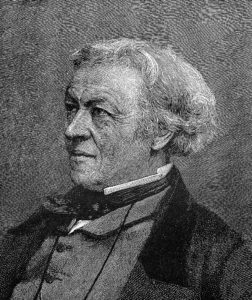
(The names were changed, well removed, to protect the innocent and guilty)
On September 8th, I received an email stating:
Hello ~ Recently acquired what is being claimed as a JBCCorot painting. I have a small window within which to authenticate or return the piece. Please let me know if this is a service you could provide for this painting or any thoughts otherwise.
I replied, stating that the Corot expert, Claire Lebeau, is in France, and the authentication process is not always a quick one. Many times, experts want to see the work in question physically. I also stressed that the responsibility of ensuring a painting’s authenticity should be the seller’s, not hers.
She got back to me, asking if there was any way the authentication could be done just with some good photographs since she only had until September 27th to return the work. She also mentioned an art expert website called www.corotexperts.com, and that she considered contacting them, but there was little background on their expertise.
I gave her a call rather than write a long email explaining the difficulties of navigating the art world. I first mentioned that many websites claim to be run by experts; the true experts operate very few of them. These sites are managed by people trying to get money for something you can do by yourself. I also went into more detail about the authentication process and the expenses involved, not the least of which are the packing, shipping, temporary import paperwork for overseas experts, etc., which can run thousands of dollars. On top of all that, some authenticators also only examine works at specific times of the year – monthly, quarterly, etc.
During our conversation, she mentioned the work as bought at an auction in Maine and was not too expensive. I replied that if someone owned a painting that was potentially worth over $100,000, would they offer it in a country sale with a very low estimate? I doubt it. Over the years, I have seen many instances where works were presented to experts who gave a negative opinion. Then, a year or two later, the same painting appeared at auction, cataloged as a genuine work by the artist. This has happened with some fake Dupré and Knight paintings I had previously evaluated, and sadly, they often sell!
I will add that the woman sent me images of the painting, and they seemed familiar to me (it turns out I saw it on the auctioneer’s website before the sale). While the subject matter looked like something Corot would have painted, there were many red flags, not the least of which was the odd-looking red signature. I finished by saying that if someone walked into our gallery with the painting, we would not be interested in it.
Well, the next morning I received the following email:
Good Morning, Howard ~
Appreciate you taking the time to share your insights on the ‘Corot’ with me yesterday. Thank you.
I was able to connect with Claire. Am sharing her reply as you might be interested to know and so that you are aware of the practices of this particular auction house. Evidently, B.G. (Marketing Director for … Auctions) reached out to Mr. Dieterle [Claire’s father] with this painting last August. They offered a ‘preliminary opinion.’
Claire was kind enough to share the documentation of this and in her words:
“We already expertized this painting in 2020 and answered it was not by Corot : it looked to us very far from his technic and pictural writing, this is confirmed by the signature badly imitated.”
This echoes your observations on these aspects…so, a good eye there.
She also asked the following – Can an auction house or an individual be held accountable for intentionally misrepresenting artwork? How can work like this be prevented from being recirculated into what I imagine is an endless cycle of faux pieces falling into as endless a line of unsuspecting (or naively optimistic) hands?
I called her back to explain that this sort of action goes on all the time, and almost nothing is done to curtail it. As for any civil legal remedies, the fact that an attorney would charge tens of thousands of dollars to handle a case like this makes it unaffordable for the average person. The only way to stop the saleroom from doing this again would be to contact the state’s Attorney General and see if a criminal action is warranted. But again, I doubt anything will happen.
The following day we decided to do a little more research on the painting and discovered that the auction house first offered the ‘Corot’ in February 2016 as ‘Manner of J.B.C. Corot’, with a $10-20K estimate and it did not sell. Then in May 2016, it appears they sold it for $4,000 (est. $10-20K), also cataloged as ‘Manner of…’. In August 2020, it was resold at the same saleroom as a Jean Baptiste Camille Corot (no Manner of) for $6,500 (est. $10-20K). Finally, in August of this year, the painting was back up for sale and sold for $13,000 (est. $10-20K).
What I found very interesting is that before they attempted to have the work authenticated, it was sold as ‘Manner of’. After the experts rejected the work, it was being sold as an authentic painting. Go figure!
It is vital that as you travel through the art world, you connect with reputable people, those who have had decades of experience in the area you are looking to collect. As I have always said – the art world is a jungle, be sure to find the right guide before becoming someone’s next meal.
Sticky Fingers Leave Their Mark
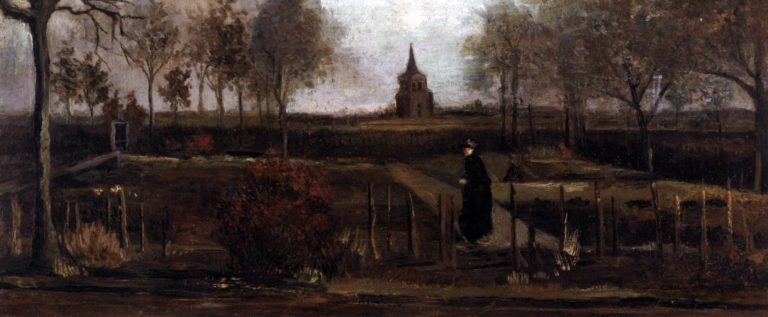 DNA left behind at two recent art heists has connected Mils M. (his full name undisclosed due to Dutch privacy laws) to the theft of two notable works of art. At one location, his DNA was found on a broken picture frame discarded in the parking lot of the Singer Laren Museum. The frame belonged to The Parsonage Garden at Nuenen in Spring by van Gogh painted in 1884, valued at $2.9 million. At the other, his DNA was found on an orange tension strap tied to a flagpole outside the Museum Hofje van Mevrouw van Aerden, in Leerdam. It was there that Two Laughing Boys with a Mug of Beer by the 17th-century Dutch painter Frans Hals was stolen, valued between $11.7 – $17.6 million. Mils M. denies involvement in the two heists and authorities fear that both works have entered the black market.
DNA left behind at two recent art heists has connected Mils M. (his full name undisclosed due to Dutch privacy laws) to the theft of two notable works of art. At one location, his DNA was found on a broken picture frame discarded in the parking lot of the Singer Laren Museum. The frame belonged to The Parsonage Garden at Nuenen in Spring by van Gogh painted in 1884, valued at $2.9 million. At the other, his DNA was found on an orange tension strap tied to a flagpole outside the Museum Hofje van Mevrouw van Aerden, in Leerdam. It was there that Two Laughing Boys with a Mug of Beer by the 17th-century Dutch painter Frans Hals was stolen, valued between $11.7 – $17.6 million. Mils M. denies involvement in the two heists and authorities fear that both works have entered the black market.
The Art Of The Steal
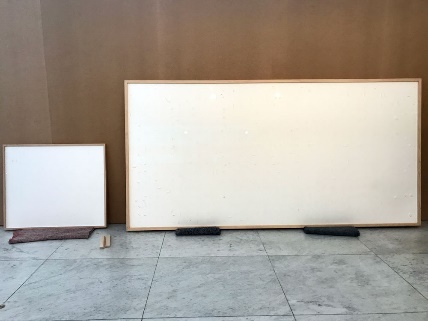 We have all seen, in recent years, that anything a person decides to call art is art — taping a banana to the wall, creating an invisible sculpture. etc. That kind of stuff blows my mind — especially when people pay big money for it.
We have all seen, in recent years, that anything a person decides to call art is art — taping a banana to the wall, creating an invisible sculpture. etc. That kind of stuff blows my mind — especially when people pay big money for it.
Well, it was recently reported that Jens Haaning, a Danish artist, borrowed 534,000 kroner ($84,000) from the Kunsten museum to replicate an old sculpture. Rather than creating the sculpture, he sent the museum a box with two empty frames; he called it Take the Money and Run.
The artist was interviewed on the Danish radio program P1Morgan and stated, “It’s not theft. It is a breach of contract, and breach of contract is part of the work.” Right now, the museum has included the empty frames in their current exhibition, Work it Out. After the exhibition, they expect the artist to return the money, but the artist has indicated that he will keep the funds.
It will be interesting to see if the museum decides to take legal action or if this is just some sort of publicity stunt.
(The attached photo is courtesy of: Mette Kirstine Goddiksen/Kunsten Museum of Modern Art)
____________________
Artist's In-Sights
Picture Purrrfect: Photographing Cats
By: Beth Sistrunk
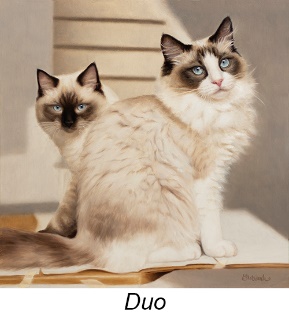 I photograph my favorite feline pals and studio companions, Zander and Liam, for my cats and kittens series.
I photograph my favorite feline pals and studio companions, Zander and Liam, for my cats and kittens series.
In the beginning, I rolled balls across the floor, hid treats, hung ribbons from rafters, but eventually, my cats caught on to my tricks. And, as I’m sure you can imagine, plopping my kitties down in the center of the rug and saying “stay” doesn’t exactly sit well with them. So, I had to get inventive to obtain the photos I needed for this painting series.
One thing I learned was when in doubt, involve a cardboard box. No, seriously, it’s like my cat's kryptonite. They’ll be deep into their afternoon nap, totally zonked out in the aftermath of their latest catnip bender, and if they hear the sound of a cardboard box being touched or moved, they can’t help but investigate. The reference photo for “Duo" was taken atop the cardboard box I used to create the playtime spaceship “Caturn 5” for my painting “In Orbit.” All I had to do was drop the box in a different position in the  room, and they did all the posing work for me. My furry pals were relaxed and happy in their element, and their pose communicated their usual confident, mischievous selves purrrfectly.
room, and they did all the posing work for me. My furry pals were relaxed and happy in their element, and their pose communicated their usual confident, mischievous selves purrrfectly.
For “Conjuring,” I used their natural curiosity to get the picture. My cats were questioning my sanity as I turned off the light and closed the supply closet door with the three of us still in there. When I turned on the glowing moon model, they were immediately attracted. But because it didn’t move, sound like, or smell like birds, they bored quickly of the orb. I only took two pictures before my cats wandered off in search of better prey in the depths of the closet. Luckily, two photos were all I needed.
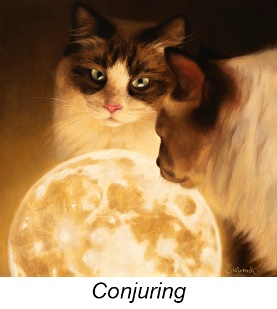 In the event cardboard boxes or mysterious objects fail to bring about the poses I need, I call in my laser pointer-wielding husband. But before I do, I set up the stage with props. In the case of “Meowsterpiece,” it was one of my easels with a blank canvas and some closed and clean bottles of acrylic paint. To get a more intimate shot, I sat on the floor in their comfy cat bed. (That thing was so comfortable, it was worth all the dirty looks I received from my kitties.)
In the event cardboard boxes or mysterious objects fail to bring about the poses I need, I call in my laser pointer-wielding husband. But before I do, I set up the stage with props. In the case of “Meowsterpiece,” it was one of my easels with a blank canvas and some closed and clean bottles of acrylic paint. To get a more intimate shot, I sat on the floor in their comfy cat bed. (That thing was so comfortable, it was worth all the dirty looks I received from my kitties.)
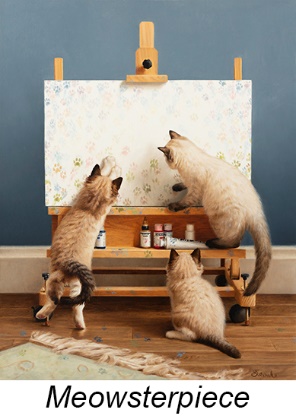 I turned on my camera’s rapid-fire mode with a click, and my husband silently pointed the laser at the blank canvas. Fortunately, the kittens forgot all about the fate of their favorite bed and repeatedly pounced the canvas. Luckily my easel is sturdy, and my ragdolls are pretty gentle on things. (Unless it’s my favorite upholstered chair.)
I turned on my camera’s rapid-fire mode with a click, and my husband silently pointed the laser at the blank canvas. Fortunately, the kittens forgot all about the fate of their favorite bed and repeatedly pounced the canvas. Luckily my easel is sturdy, and my ragdolls are pretty gentle on things. (Unless it’s my favorite upholstered chair.)
Except for “Duo,” I find that both cats rarely provide a good pose in the same photo, so I get creative with what I have. Over a hundred photos from the laser pointer shoot were narrowed down to three and combined in photoshop to create “Meowsterpiece.” Next, I digitally added all the little kitty “paint” footprints to my photo composite to complete the whimsical composition. Then, I drew the scene on a panel and carefully added many layers of oil paint until I finished the painting.
Using the cat’s natural behaviors can yield great photos if you’re patient and have a willing assistant or cardboard box.
____________________
Really?
By: Amy
David Drake Jar Breaks Record

Crystal Bridges Museum of American Art is the proud new owner of a David Drake poem jar, the highlight of Crocker Farms Summer auction. Drake, born in 1801, was a leading African American artist from South Carolina and has become known for his pottery and poetry.
Drake was enslaved most of his life by various owners, all of whom were pottery manufacturers, and continued to work as a potter even after his emancipation. It is important to note that very few enslaved artists’ names are known today as it was illegal for them to learn how to read and write. Drake was quite the exception; he inscribed many of the pieces he created with poetry and signed and dated his work.
The jar exemplifies Drake’s work; it is a twenty–five–gallon four-handled stoneware jar; on one side, it is signed “Lm. April 12, 1858/Dave and on the other side, a short verse is inscribed:
‘A very Large Jar which has four handles/
pack it full of fresh meats – then light the candles.”
Jars like these were used to store meat and then were sealed with candle wax for preservation. Once filled, they could weigh 150 pounds and needed two people to carry them. (I bet you appreciate your butcher’s delivery service!)
The jar was estimated to make $300-600K, but apparently, there were some determined bidders. Crystal Bridges Museum has a very generous acquisition fund, which enabled them to defeat the competition as the hammer came down at $1.3M ($1.56M w/p), the highest auction price achieved for American pottery. Curator Barron Bailly said, “This is a rare and important acquisition to help tell the stories of craft, American history, enslavement, the meat industry, relationships between labor and art, and so much more.”
As Crystal Bridges is committed to showcasing American art created over the past five centuries, it is really nice to know that this important piece will now be available for all to enjoy.
900 Year Old Pot Surprises Auctioneers
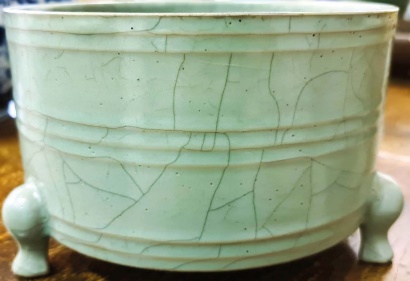 When an elderly couple passed away, relatives came in to clear out their home. Everything had to go, so they had a local auction house come in to value the contents. A small crackled celadon green pot/bowl (5 inches tall) that sat on top of the couple’s sideboard in their dining room was estimated, buy the auctioneer, to make a mere £500- 800. Once again, the auction room got it wrong; it turns out the pot is from the Song dynasty; it is a piece of Ru ware created 900 years ago. There are only a small number of similar pieces in private hands today.
When an elderly couple passed away, relatives came in to clear out their home. Everything had to go, so they had a local auction house come in to value the contents. A small crackled celadon green pot/bowl (5 inches tall) that sat on top of the couple’s sideboard in their dining room was estimated, buy the auctioneer, to make a mere £500- 800. Once again, the auction room got it wrong; it turns out the pot is from the Song dynasty; it is a piece of Ru ware created 900 years ago. There are only a small number of similar pieces in private hands today.
Three knowledgeable collectors fought for the prize and totally took the auctioneers by surprise when the pot finally hammered at £320K/$440K (£385K/$529K w/p), just ‘a little more’ than the estimate. And I would say the relatives, with their unexpected windfall, are probably out celebrating!
Holy ‘Comic Book’ Batman
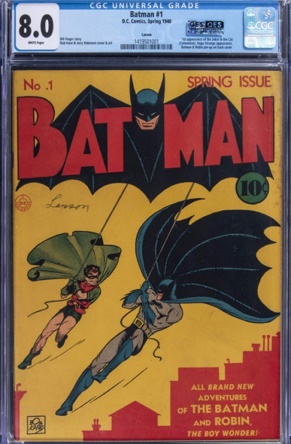
Goldin Auctions held its first non-sports-oriented auction featuring comic books, video games, and trading cards – and boy did it deliver. Leading the sale was a rare, first edition 1940 D.C. comic book starring Batman (#1); this was the first issue dedicated to the Dark Knight and the legend of how he came to be. In addition, it is the first time that the Joker and Catwoman appear in a D.C. comic. This copy received a grade of 8 by CGC (Certified Guaranty Company), one of the leading grading services for comic books, trading cards, magazines, and concert posters. The comic book was in very good condition with possibly a moderate defect or an accumulation of minor flaws. Bidding started at $250K and topped out at $1.2M ($1.47M w/p), which set an auction record for a Batman #1 comic with this grading. In January of this year, a copy of the same comic book, with a 9.4 grading from CGC, sold for $2.2M (the second-highest price ever paid for a comic book at a public auction.)
There were quite a few items in the sale that had impressive results, some of which set new auction records… here are just a few. A 1962 Marvel “Amazing Fantasy” #15, where Spiderman makes his first appearance, sold for $575k ($707K w/p). The Mighty Thor made his first appearance in the 1962 Marvel Comic “Journey into Mystery #83,” which sold for $260K ($320K w/p). And this one surprised me… a copy of Avengers #1 graded CGC 9.6, which is nearly perfect and one of only five copies to receive such a high grade, set an auction record when it sold for $300K ($369k w/p) – I thought it would have gone for far more.
As for video games, the highest price went to a sealed 1996 N64 “Super Mario 64′ video game, graded by WATA (one of the leading grading companies for video games) with a 9.8/A++; it sold for $650K ($799.5K w/p). While this game cartridge did not set a record (a copy of the same game sold just a few months earlier in July for $1.56M), I still think $800K is impressive! Another Super Mario Bros. game cartridge from 1985, still in its sealed package, sold for $550K ($676.5K w/p); it received a 9.2 grading from WATA. Finally, a 1991 copy of Sega’s Sonic the Hedgehog, still sealed and in mint condition, made $350K ($430K w/p) which set a record for any SEGA Genesis game. One of the co-creators of Sonic, Yuji Naka, was so stunned by the price that he questioned on Twitter whether the winning bid was a scam. Goldin’s has responded to the inquiry stating that the sale is ‘absolutely genuine’!
Of course, I should also mention that some trading cards had a good day too. The top lot in this category was a 2002 1st Edition unopened box of Yu-Gi-Oh! ‘Legend of Blue Eyes White Dragon’ trading cards, which sold for $475K ($584K w/p). Sorry, I don’t know what these are, but apparently, you kids collected Yu-Gi-Oh! cards or Pokémon cards – we had a Pokémon household.
____________________
The Art Market
By: Howard
The auction action is starting up again, and this month we had a couple of introductory sales.
19th & 20th Century Art – Bonhams, London
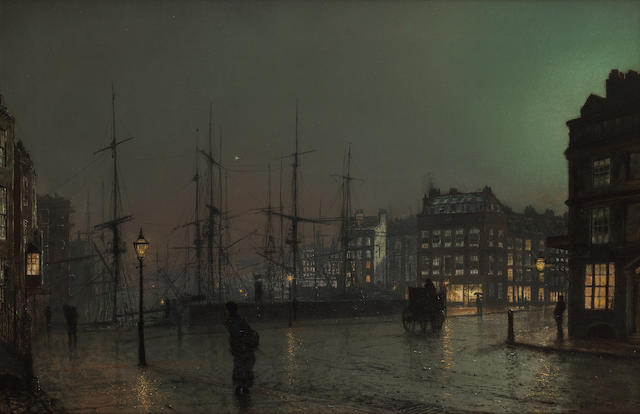 Well, the auction action is starting again. This month, Bonhams, London, presented a small selection of 19th Century and British Impressionist art. I will say that after looking at the offerings, there were a couple of works that caught our eye, but after getting the condition reports, we took a pass.
Well, the auction action is starting again. This month, Bonhams, London, presented a small selection of 19th Century and British Impressionist art. I will say that after looking at the offerings, there were a couple of works that caught our eye, but after getting the condition reports, we took a pass.
The sale opened at 9 am New York time on the 22nd, and taking the top spot was Atkinson Grimshaw’s dark evening scene titled Greenock at £160K/$218K (£200K/$273K w/p – est. £180-220K). Next came a nice watercolor by Archibald Thorburn titled Blackgame that had been in the same family’s collection since 1966 (very fresh). The work carried a £60-80K estimate and sold for £90K/$123K (£113K/$154K w/p). There were four other paintings by the artist, but none came close to this one.
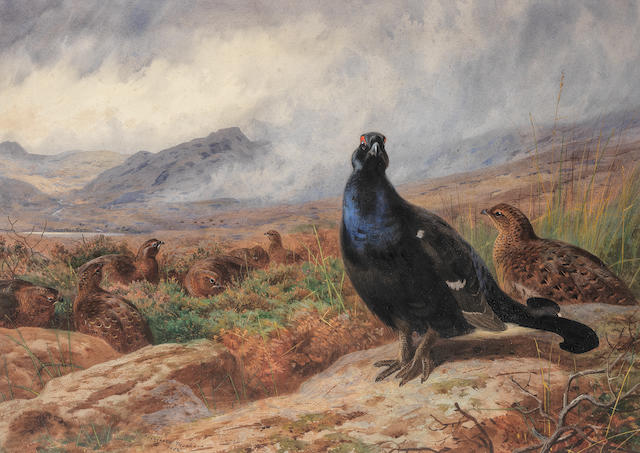 In third place, there was a tie. One was a classic British Victorian genre painting by Charles Burton Barber titled Only a Shower. The painting was recently offered in their June 2020 sale with an aggressive estimate of £120-180K and did not find a buyer. This time it carried a £70-100K estimate and sold for £70K/$95.5K (£88K/$120K). The seller originally purchased the painting back in 1999, at a Christie’s New York sale, for $222.5K… they took quite a loss. A few lots later, John W. Godward’s Stesicrate, a Neo-classical portrait, also brought £70K/$95.5K on a £40-60K estimate. This painting went unsold several times – 1998 (est. £80-120K), 1999 (est. £60-80K), and 2018 (est. £60-80K). Guess the fourth time was a charm! Rounding out the top five was Rogelio de Egusquiza’s Lady in Pink. The seller originally purchased the painting in 2006 for £55K/$102K (the Pound was strong at that point). It appears they tried to resell it in 2008 with a $200-300K estimate, and it went unsold. In 2011, they tried again at $140-180K – no takers. This time around, it brought £65K/$89K (£82K/$111K).
In third place, there was a tie. One was a classic British Victorian genre painting by Charles Burton Barber titled Only a Shower. The painting was recently offered in their June 2020 sale with an aggressive estimate of £120-180K and did not find a buyer. This time it carried a £70-100K estimate and sold for £70K/$95.5K (£88K/$120K). The seller originally purchased the painting back in 1999, at a Christie’s New York sale, for $222.5K… they took quite a loss. A few lots later, John W. Godward’s Stesicrate, a Neo-classical portrait, also brought £70K/$95.5K on a £40-60K estimate. This painting went unsold several times – 1998 (est. £80-120K), 1999 (est. £60-80K), and 2018 (est. £60-80K). Guess the fourth time was a charm! Rounding out the top five was Rogelio de Egusquiza’s Lady in Pink. The seller originally purchased the painting in 2006 for £55K/$102K (the Pound was strong at that point). It appears they tried to resell it in 2008 with a $200-300K estimate, and it went unsold. In 2011, they tried again at $140-180K – no takers. This time around, it brought £65K/$89K (£82K/$111K).
Several lots performed well… Charles O. Blanchard’s Portrait of a Girl made £32K/$44K (£40K/$55K w/p – est. £10-15K), Edward Seago’s Landscape on the North Coast 28K/$38K (£35/$48K – est. £8-12K), Robert M. Martineau’s The Pet of the Brood garnered £24K/$33K (£30K/$41K – est. £6-8K), and John Edward Newton’s Rival Performers brought £30K/$41K (£38K/51K w/p – est. £6-8K). On the flip side, some failed to find buyers; among them were Ansdell’s A Spanish Encounter (£12-18K), Irolli’s Maternita (£15-20K), Reggianini’s The Suitor (£20-30K), and Mancini’s Ritratto del Barone Caccamisi come Spadaccino (£30-50K).
By the end of the sale, of the 89 works offered, 63 sold (70.8% – not bad), and the total hammer price was £1.377/$1.88M. The low end of their estimate range was £1.364M, so they just beat it. To me, that is a positive sign. Of the 63 sold lots, 21 were below, 17 within, and 25 above their estimate ranges, leaving them with an accuracy rate of just 19%.
Stay tuned; there are a lot more coming this fall.
Impressionist & Modern (Day Sale) – Sotheby’s
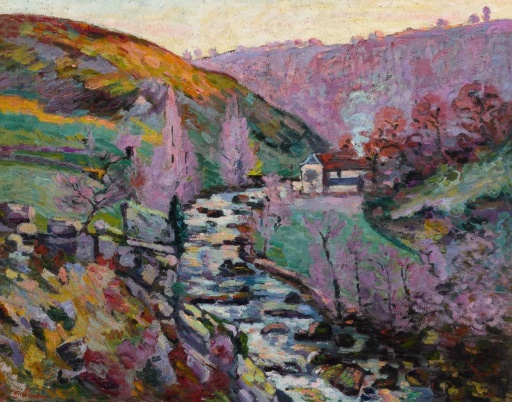 Another teaser sale happened in late September when Sotheby’s offered a selection of mid to lower-level Impressionist and Modern works of art. While this was not an “important” sale, I thought it would be a good barometer of the market going into the fall season. (Unless otherwise noted, all prices are hammer. w/p = with the buyer’s premium)
Another teaser sale happened in late September when Sotheby’s offered a selection of mid to lower-level Impressionist and Modern works of art. While this was not an “important” sale, I thought it would be a good barometer of the market going into the fall season. (Unless otherwise noted, all prices are hammer. w/p = with the buyer’s premium)
Taking the top spot was a colorful landscape by Armand Guillaumin titled Crozant, la folie, le soir. The painting had been in a collection since the 1980s… it carried a $40-60K estimate and hammered at $65K ($81.9K w/p). There was a tie for second… Blanche Hoschedé-Monet’s Un Coin de Jardin (purchased back in 2005 for $25K) was expected to bring $30-50K, while Chagall’s Profil bleu du peintre pour les amis Cain (bought in 2018) carried a $40-60K estimate; both hammered at $55K ($69.3K w/p).
Rounding out the top five were a large Gustave Cariot and a smaller work by Ferdinand du Puigaudeau. The Cariot, titled Le Pont-Neuf, eté, 20 heures (est. $25-35K), brought $48K ($60.5K w/p); the Puigaudeau, titled Fille de l’artiste au bonnet bleu, crushed its $12-18K estimate when it sold for $45K ($56.7K w/p) – I have to admit, that was a surprise to me.
Several other works blew past their estimates; these included Stuart M. Armfield’s Prayer that made $12K ($15.1K w/p – est. $800-1.2K), Pissarro’s Country Scene with a House along a Road at $28K ($35.3K w/p – est. $12-18K), a Francois Gall at $5K ($6.3K w/p – est. $1-1.5K), Duilio Barnabe’s Figura made $16K ($20.2K w/p – est. $6-8K), and Jacques Martin-Ferrieres’s Bahia brought $22K ($27.7K w/p – est. $3-5K).
As always, a few works failed to find buyers. Sadly, the most expensive lot in the sale was among them – Henri Martin’s Bassin ouest du Parc de Marquayrol avec vue sur l’atelier d’Henri Martin (est. $120-180K). Maufra’s Le Vieux bateau, Morgat (est. $30-50K), Foujita’s Portrait (est. $30-50), and Brasilier’s Fenêtre le soir (est. $15-20K) were also among the non-starters.
By the end of the session, 111 works were offered, and 93 sold. That gave them a sell-through rate of 83.8%, which is respectable. The low end of their presale estimate range was $1.21M, and the hammer total was $1.24M ($1.57M w/p), so they just made it. Of the 93 sold works, 17 were below, 36 within, and 40 above their expected range; this left them with an accuracy rate of 32.4% — pretty good.
____________________
Deeper Thoughts
By: Nathan
Dancing With Death On The Colorful Canvas: A Snapshot Of Art During Our Plague
In this age of Covid and lockdowns, online classes and mask mandates, one cannot help but contemplate the other great plagues that have, to put it at its mildest, ruined everyone’s plans. The Black Death ravaged Europe and Asia from 1346 to 1353, killing anywhere between 30 and 60% of the population, depending on the area. Probably one of the most humorous and begrudgingly accurate observations of our own plague pertains to the art produced during and immediately after the Black Death. Specifically, some might feel a greater connection to the subjects of many pieces of Renaissance art: chubby people with little to no clothing reclining on sofas sipping wine, not unlike many of us prancing about our homes and apartments in our underwear, sipping Malbec waiting for Zoom to load.
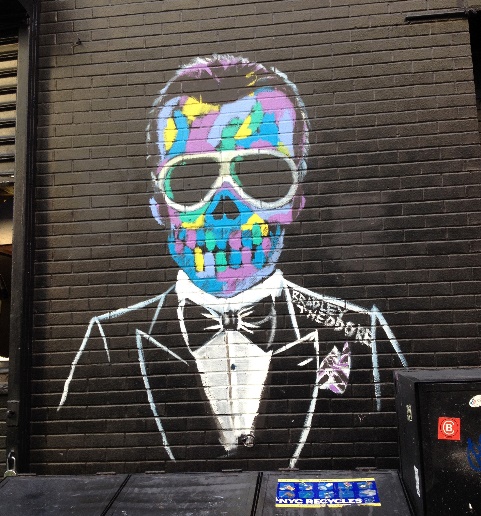 But one of the most interesting and morbid aspects of how the Black Death influenced Western art trends is the danse macabre. Meaning “dance of death” in French, the danse macabre refers to how death as a figure became commonplace in art. In times of sickness, it’s easy to be reminded of such a reality, hence its reflection in contemporary art. Throughout Europe in paintings, frescoes, prints, and other artistic media, skeletal figures took the living by the hand. Popes, princes, peasants, plowmen, and paupers were all made equal in death as the skeletons danced with them all. Artists made a point to show death as something universal; the common denominator for everyone.
But one of the most interesting and morbid aspects of how the Black Death influenced Western art trends is the danse macabre. Meaning “dance of death” in French, the danse macabre refers to how death as a figure became commonplace in art. In times of sickness, it’s easy to be reminded of such a reality, hence its reflection in contemporary art. Throughout Europe in paintings, frescoes, prints, and other artistic media, skeletal figures took the living by the hand. Popes, princes, peasants, plowmen, and paupers were all made equal in death as the skeletons danced with them all. Artists made a point to show death as something universal; the common denominator for everyone.
This trend continues to show itself through artistic expression even today. The first time I saw the work of Bradley Theodore was on the Lower East Side of Manhattan. It was not in a gallery, or on the walls of a museum. It was on the corner of Ludlow and Rivington Streets, on a brick wall right next to an Italian restaurant. I had never seen anything like it before: a bust of a tuxedoed skeleton with short black hair sporting a pair of Aviators. The skull itself was made through a sort of seemingly slapdash yet precisely arranged mosaic of various shades of purple and blue, with the occasional spot of bright yellow. The mural has since been painted over, but I know that many passersby, including myself, snapped a photo.
Theodore created this mural around 2016, which is around when he made his first splash on the scene. The mural that had caught my eye was actually one of his lesser-known works, as other graffiti murals popped up across Manhattan around that time, most notably his portraits of Anna Wintour and Karl Lagerfeld. While his use of color is no doubt the greatest single identifier of his work, inspired by his upbringing in Turks & Caicos, the subject of the skeleton is almost equally as prevalent throughout Theodore’s oeuvre. Alongside Wintour and Lagerfeld, he’s also given his treatment to Beethoven, Coco Chanel, Frida Kahlo, and even Queen Elizabeth. Speaking of Her Majesty, the crowned skull is a popular subject for Theodore. Although he created many of such paintings before most of us had even heard of the coronavirus, he has continued to use this particular subject over the past two years. Theodore has stated in interviews that he uses the colorful skeletons because he sees them as “a symbol of a person’s spirit. It’s like I’m wrapping someone’s soul around their skeletal system.” While Covid clearly didn’t influence their original creation, some may be tempted to bestow these multicolored skulls with new personal meaning because of our current circumstances.
Through his own sort of danse macabre, like that of his medieval predecessors, a newer takeaway of Theodore’s work is that plague and death do not differentiate between crowned heads and bare ones, in the literal sense as well as the figurative. It’s a message that many have tried (and failed) to convey to those who have not taken things seriously. But, unlike the artisans from centuries ago, Theodore brings something new to this old tradition. By using bright, beautiful colors tessellated across brick and canvas, Theodore almost removes the morbidity from these otherwise symbols of death. What previously inspired dread is now exciting and enjoyable.
While his execution may seem innovative, consciously or not Theodore is also drawing from a long tradition of bringing light and color to death. In Theodore’s work, we’re able to see Hans Holbein and the others who painted and printed the dance of death in Europe. But alongside these long-dead European masters, there is also a still-living tradition from south of the border. Whether you’ve heard about it in Spanish class, or you’ve watched the 2017 Disney-Pixar film Coco, Mexico’s Día de los Muertos, or the Day of the Dead, is a vibrant, colorful event. It stands resplendent, ornamented with marigold flowers, paper decorations, and brilliantly-colored sugar skulls. Its conviviality is only amplified when looking at its drab American counterpart, which seems overly gloomy by comparison. The analogously lighthearted nature of Día de los Muertos has also been kept alive by artists like José Guadalupe Posada, whose skeletal etchings and lithographs not only live on as symbols of Mexican culture, but have also served as a major influence on our own modern cultural reference points like Coco. And now, the legacy of Posada and other artists, with their dapper skeletons in suits and hats, seem to live on in Theodore’s work in London’s galleries and on the brick walls of New York’s streets.
After nearly two years of living in this extraordinary time, sickness and death have seemed to surround all of us. Now with the Delta variant serving as the latest installment of our excitingly sad story, art and creativity are still needed as much as before. Bradley Theodore’s neon-colored crowned skulls are just one example of how we can find meaning in our own danse macabre.
The Fallen Buddhas’ Shadow: The Uncertain Future Of Afghanistan’s Artists
Since the fall of Kabul on August 15th, there have been a seemingly infinite number of questions raised about the future of Afghanistan. One question, though, has been sticking out more than others: how will this regime be different from the notorious theocracy that fell in 2001? While some changes have been observed, like girls being allowed to attend school, some things have definitely remained the same. One such hallmark of Taliban rule is the group’s disdain for dissent and free expression. Art and artists were one of the most visible targets of the Taliban when the group ruled the country between 1996 and 2001. Some of their most well-known victims, while not living beings, were a great loss. They were the now-destroyed Buddhas of Bamiyan, a pair of enormous sixth-century statues carved into the sandstone cliffs of a valley in central Afghanistan. Despite international outcry, the statues were demolished on the orders of the Taliban’s Supreme Commander Mohammed Omar after he decided they were idols.
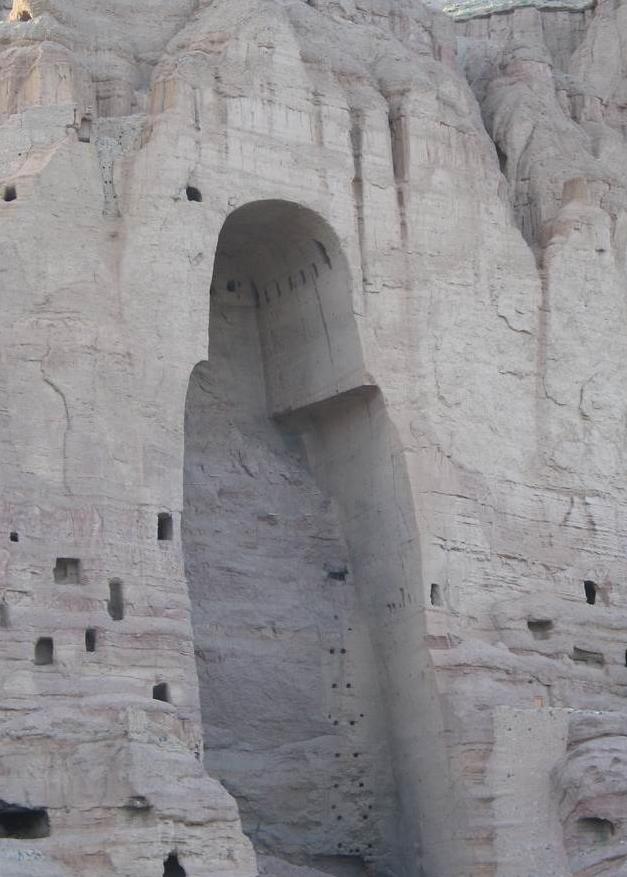 Talking about free expression, one of my favorite lines from any sort of media is from Alan Moore’s graphic novel V for Vendetta, where the titular masked character says, “Artists use lies to tell the truth.” Commonly, artists take lies, something that does not exist outside of their own minds, using them in such a way to show us something about the world. In doing so, many artists participate in the rich creative tradition of criticizing authority. But one of the main characteristics of fundamentalists is they don’t seem to take criticism particularly well. Aware of this reality, hundreds of cultural figures and organizations have voiced their support for extracting and protecting Afghan artists, many by adding their names to an open letter to the American government urging such action. Since the Taliban entered the city, films have been taken from archives, and instruments from music schools have been destroyed. Most visibly, however, prominent works of street art have already been painted over and replaced with slogans and other propaganda. Among such defaced murals is one showing Taliban leader Abdul Ghani Baradar and US special envoy Zalmay Khalilzad shaking hands after signing the agreement securing US troop withdrawal in 2020. Omaid Sharifi and his organization ArtLords were responsible for that mural as well as almost 2,200 other works throughout Afghanistan, mainly on the blast walls that have been erected in the country’s cities.
Talking about free expression, one of my favorite lines from any sort of media is from Alan Moore’s graphic novel V for Vendetta, where the titular masked character says, “Artists use lies to tell the truth.” Commonly, artists take lies, something that does not exist outside of their own minds, using them in such a way to show us something about the world. In doing so, many artists participate in the rich creative tradition of criticizing authority. But one of the main characteristics of fundamentalists is they don’t seem to take criticism particularly well. Aware of this reality, hundreds of cultural figures and organizations have voiced their support for extracting and protecting Afghan artists, many by adding their names to an open letter to the American government urging such action. Since the Taliban entered the city, films have been taken from archives, and instruments from music schools have been destroyed. Most visibly, however, prominent works of street art have already been painted over and replaced with slogans and other propaganda. Among such defaced murals is one showing Taliban leader Abdul Ghani Baradar and US special envoy Zalmay Khalilzad shaking hands after signing the agreement securing US troop withdrawal in 2020. Omaid Sharifi and his organization ArtLords were responsible for that mural as well as almost 2,200 other works throughout Afghanistan, mainly on the blast walls that have been erected in the country’s cities.
On top of artists and other cultural figures, women are one of the main at-risk groups whose security and future in Afghanistan have been jeopardized by recent developments. Faced with such uncertainty, the women of Afghanistan’s artistic community are pillars of strength and perseverance who deserve particular recognition. Shamsia Hassani, dubbed “the Afghan Banksy” by some, became a sort of double target of the Taliban by working as a professor at Kabul University, as well as making a name for herself as a graffiti artist. Her work calls attention to repression carried out by the Taliban, specifically the plight of women in her country. However, she has also stated she enjoys showing the brighter, more colorful side of the Afghan people that many seldom see on Western news channels. And now she has not been heard from in nearly two weeks. Some have speculated that she escaped the country, but nothing has been confirmed yet.
Rada Akbar is another artist who focuses on Afghanistan’s women. However, rather than using the image of the average Afghan girl to symbolize the condition of all women in the country like Hassani does, Akbar does so by highlighting the specific examples of strong women who made and continue to shape Afghanistan. A few years ago she founded Abarzanan, an art project meant to be a space for recognizing great women. While the project’s first exhibition in 2018 focused only on a select group of Afghan women, later exhibitions broadened their focus to include prominent women from across the world. Akbar has created works in honor of human rights advocates, teachers, singers, and the victims of extrajudicial, misogynist mob violence. She also draws upon Afghanistan’s history by creating works inspired by Rabia Balkhi, a great medieval female poet, as well as Soraya, the twentieth-century modernizing queen-consort. For the past month, however, Akbar’s life has radically changed. When many of her visa applications were denied or ignored, she even considered suicide rather than live under the Taliban again. Fortunately, she was able to gain a two-month visa from the French embassy.
Though the Taliban were driven from power in 2001, the Islamic State (ISIL) instilled the same fears as the Taliban through their destruction of museum collections and desecration of ancient sites in Iraq and Syria. Although the Buddhas of Bamiyan were destroyed twenty years ago, the empty alcoves where the Buddhas once stood remain a poignant reminder of how fundamentalists do business. But after all these years, the Afghan creative community has co-opted the image of the hollowed stone cavities as a symbol of their own struggle against suppression and censorship, including Shamsia Hassani in her prints. Art matters because it provides something stimulating, either to distract or to provoke. But more than that, it connects disparate communities through something more universal. Therefore, it is not just a courtesy or a kindness to protect this community from theocratic oppression, but it becomes an obligation to do so both out of decency and in defense of free expression.
That’s A Wrap: Christo’s Last Work At The Arc de Triomphe
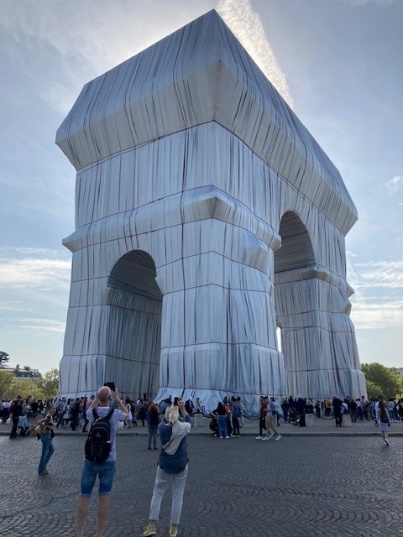 I was a shivering, sniffling, nearly 8-year-old boy in February 2005 when we went on a walk through Central Park. I wasn’t sure why we were out freezing in the park when we could’ve stayed in my aunt’s well-heated Upper West Side apartment. I was just about to complain about the cold again when, among the icy greens and browns, flashes of bright, warm color started to appear through the branches in the distance. As we continued walking, I saw these structures, evenly spaced along the path cutting through the park. They were the Gates: 7,503 identical metal archways, each draped with a length of nylon fabric. Everything was fluttering and colored with an orange saffron. My gaze was fixed upward the entire time, and I forgot I was cold. That was the first time that I saw the work of Christo and Jeanne-Claude.
I was a shivering, sniffling, nearly 8-year-old boy in February 2005 when we went on a walk through Central Park. I wasn’t sure why we were out freezing in the park when we could’ve stayed in my aunt’s well-heated Upper West Side apartment. I was just about to complain about the cold again when, among the icy greens and browns, flashes of bright, warm color started to appear through the branches in the distance. As we continued walking, I saw these structures, evenly spaced along the path cutting through the park. They were the Gates: 7,503 identical metal archways, each draped with a length of nylon fabric. Everything was fluttering and colored with an orange saffron. My gaze was fixed upward the entire time, and I forgot I was cold. That was the first time that I saw the work of Christo and Jeanne-Claude.
The husband-wife duo Christo Javacheff and Jeanne-Claude Denat de Guillebon were responsible for some of the greatest and most recognizable pieces of site-specific environmental art installations of the twentieth and twenty-first centuries. While projects like the Gates in Central Park or the Surrounded Islands in Biscayne Bay, Florida were iconic, monumental undertakings in their own right, the method that brought the pair a great deal of name recognition was quite literally monumental by nature. Most will probably know the work of Christo and Jeanne-Claude from their wrapping projects, where public buildings and monuments were draped and wrapped in fabric. While the two had been experimenting with that medium since the late 1960s, they didn’t become well-known for it until 1985, when they wrapped a Paris bridge, the Pont Neuf. The installation remained for two weeks and attracted about three million visitors. Because of their public nature, the wrapping projects have become some of Christo and Jeanne-Claude’s best known work. Throughout their career, the subjects of their wrappings have included the Chicago Museum of Contemporary Art, as well as a portion of Little Bay beach in Australia. In 1995, they were given permission to wrap the Reichstag in Berlin. This was their most ambitious project to date, and soon became a symbol of a renewed Berlin and a newly reunified Germany.
Although Jeanne-Claude passed away in 2009, Christo continued in his work right up until his death last May. He completed the Floating Piers at Lake Iseo in northern Italy in 2016, as well as the London Mastaba in London’s Hyde Park in 2018. However, the late artists’ wishes have been respected, and their last project has been carried out posthumously in Paris. The project is being carried out and supervised at the insistence of his nephew Vladimir Yavachev. Starting last week, the Arc de Triomphe was wrapped in a blueish silver fabric and fastened with red ropes, reminiscent of the red, white, and blue of the French tricolor. The wrappings will remain until October 3rd, just in time for the monument to return to its normal state for Armistice Day ceremonies. French President Emmanuel Macron was present at the project’s unveiling, referring to it as “a crazy dream come true”.
Christo first thought of the idea in the early 1960s when he still lived in Paris, but the actual planning did not start until around 2018. The short time between the planning and execution must have been a relief compared to the ridiculous waiting periods that Christo and Jeanne-Claude would normally endure to gain approval to see their work realized. Since many of their works involved well-known public buildings and structures, the duo often had to wait years and sometimes decades before all the right government agencies and conservation committees gave their okay. The duo had to wait about ten years before their Pont Neuf project was approved, while the Wrapped Reichstag took twenty-four years, and the Gates twenty-six years.
Both Parisians and visitors alike have lauded the Arc de Triomphe project, but not all the talk has been kind. It’s understandable, I suppose, to see the project as an eyesore if you’re not used to it. But to see something as solid and heavy as a two-hundred-year-old, enormous limestone monument appear so fluid and dynamic is something that many will probably never see again. Regardless, French journalist Christine Kelly tweeted a photo of the wrapped monument with the short accompanying message: J’ai honte. Désolée (I am ashamed. Sorry). Some have even taken issue with the amount of materials wasted to carry out the project, even though all the fabrics and ropes are made of polypropylene and are therefore recyclable. Florian Philippot, president of the French far-right nationalist party Les Patriotes, probably issued the most caustic criticism. Philippot called the wrapping “a garbage bag draped over one of our most glorious monuments.” While Philippot’s words were harsh, Sebastian Smee of the Washington Post seemed to recognize this insult as providing a deeper meaning to Christo and Jeanne-Claude’s wrapping projects. Smee notes that the Arc de Triomphe was built for a specific purpose, that being to celebrate the military glory of France. While some have interpreted the wrapping method as a symbolic way of preserving the subject of the project, those like Smee seem to interpret the message as trying not to preserve but to cover up; that enormous arches honoring martial triumph are incompatible with our current socio-political climate. The wrappings leave the structure as it is, but it covers up the sculptures glorifying the bellic scenes of the Napoleonic age. So maybe the fabric covering the Arc de Triomphe is actually a garbage bag as Philippot says. As Smee wrote, “Garbage needs to be wrapped.”
The Rehs Family
© Rehs Galleries, Inc., New York – October 2021
